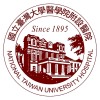
Prosody Assessment After Right Hemisphere Stroke
Right Hemisphere StrokeFollowing a right stroke, more than half of the patients present a communication disorder. These disorders can notably concern prosody. Nevertheless, these remain relatively poorly assessed and characterized. Prosodic alterations in comprehension can result in a disruption of social cognition with potentially important consequences in terms of functional outcome and quality of life of patients. In clinical practice, the investigators do not have a tool that allows us to finely assess these disorders. Studies in healthy subjects using a processing algorithm capable of arbitrarily manipulating the pitch dynamics of recorded voices have revealed that there are stable internal representations for prosody processing. Initial pilot results show that this method can be used in a clinical context and can indeed identify and accurately measure perceptual processing deficits in prosody following a right stroke. It is necessary to continue the study of this approach with a larger number of subjects in order to have normative data and validate the diagnostic properties of this approach.

Effect of Intensive Cognitive Rehabilitation on Cognitive, Motor, and Language Functional Networks...
StrokeAltered brain networks, including cognitive, motor, and language networks, are investigated by intensive cognitive rehabilitation in subacute stroke patients.

Stroke Research Initiative to Advance Equity
StrokeAssess patient-centered outcomes (PCOs) amongst stroke survivors and their caregivers in the MedStar Health system longitudinally. i. Utilize a community advisory board (CAB) of stroke survivors and their caregivers to identify the patient-centered outcome(s) that they determine to be most important and valuable to assess based on their lived experiences. ii. Collect the chosen PCOs at multiple time points using an electronic survey tool (e.g. Qualtrics, Tonic or RedCap) Evaluate the impact of social determinants of health (SDoH) and experiences of discrimination on the chosen PCOs. Examine whether there are differences in long-term PCOs amongst stroke survivors from different racial and ethnic groups. 2.2 Hypothesis: We hypothesize that stroke survivors that come from historically marginalized populations, specifically African American and Latinos, will have lower patient-centered outcome scores overall as compared to their Caucasian counterparts. In addition, we hypothesize that the difference PCO scores between Caucasian and African American and Latino populations will be due in part to experienced discrimination and not SDoH alone. .

Developement of Stroke Prognosis Predictive Precision Medicine Based on a Digital Twin
StrokeThe purpose of this study is to realize customized precision medicine for stroke patients and the visual digitization of patient medical information required in the era of digital transformation. This study will collect large-scale, high-quality clinical data and daily life exercise pattern data covering the subacute to chronic stages of stroke patients. Based on this, we will use artificial intelligence analysis technology to predict the functional status of stroke patients in the chronic stage after their disability is fixed. We aim to develop the next generation of personalized digital twins by creating a prognostic prediction model.

Safety and Efficacy of ALZT-OP1a as Adjuvant Treatment in Subjects With Post-Ischemic Stroke Cognitive...
Ischemic StrokePost-stroke Cognitive ImpairmentThis is a Phase II, randomized, double-blinded, placebo-controlled study for subjects with evidence of PSCI.

Monitoring Strategies for the Detection of Atrial Fibrillation in Patients With Cryptogenic Stroke...
StrokeAtrial FibrillationRandomized clinical trial comparing two monitoring strategies, the use of a 48-hour Holter (routine care branch) and an event recorder for 7 days (intervention branch). Patients admitted for cryptogenic stroke will be included. Enrollment and randomization of patients will be carried out during the index case hospitalization, while follow-up will be done on an outpatient basis until day 7.

Ultrasound Application on the Suprascapular Nerve for Stroke Patients
StrokeThe suprascapular nerve is the first nerve that branches from the upper trunk of brachial plexus. It receives signals transmitted from the fifth and sixth cervical root. The clinical importance of suprascapular nerve is mainly based on its distribution of 70% sensory innervation to the glenohumeral joint. After being divided from the upper trunk, the suprascapular nerve goes laterally and posteriorly. First, it passes underneath the omohyoid muscle, and then goes through the suprascapular notch into the suprascapular fossa. If there are some problems inside the supraspinatus muscle at the suprascapular fossa, the suprascapular nerve below it may be compromised. After the suprascapular nerve passes the suprascapular fossa, it courses through the spinoglenoid notch, and then goes into the infraspinatus fossa to innervate the infraspinatus muscle. Based on the sensory and motor innervation of the suprascapular nerve to the shoulder joint, the sonographic images of the suprascapular nerves would add tremendous values in assessing patients with refractory shoulder pain. Although there are some studies trying to measure the size of the suprascapular nerve, no available research can be found in stroke patients. Our study aims to explore the ultrasound morphology of the suprascapular nerves as well as subacromial dynamic imaging in patients with stroke. A control group without stroke will be recruited for comparison.

Living With Stroke - Sustainable Utilization of Healthcare Services
StrokeCerebrovascular Disorders2 moreThe proposed study will generate a national mapping of healthcare utilization patterns in people post-stroke in the chronic phase living in the community; examine the associations between individual-level characteristics, health outcomes and healthcare utilization; and will describe patients' perspectives on their needs for health services and their experiences of using them. The study will use mixed-methods methodology (quantitative and qualitative) and will proceed in three parts. In part 1, data will be extracted retrospectively from electronic medical records of of Clalit Health Services, covering all patients with a stroke diagnosis. In part 2, a sub-sample of 240 patients will be asked to answer standardized questionnaires. In part 3, a sub-sample of 20 participants will participate in in-depth, semi-structured interviews.

Prognostic Prediction Model of Patients With AcUte Stroke undeRgoing EndOvascular TheRApy (AURORA)...
Acute Ischemic StrokeStroke is the leading cause of disability-adjusted life years (DALYs) in China, imposing a heavy burden on society and families. Endovascular therapy (EVT) has opened the 2.0 era of acute ischemic stroke (AIS) treatment, but still up to 1/3 of patients have poor neurological prognosis. The results of several studies at home and abroad and by our team indicate that anesthesia method and perioperative management are one of the key factors affecting the neurological prognosis of EVT treatment in AIS patients. Based on machine learning big data analysis methods, a prognostic model for EVT treatment of AIS patients can be established to guide individualized treatment decisions. Current prediction models only include patients' baseline variables, and lack the inclusion of intraoperative (anesthesia management and interventional process) and postoperative (intensive monitoring treatment) variables, which limits the clinical application of prediction tools. We will establish a large prospective cohort database including preoperative, intraoperative, and postoperative variables, integrate heterogeneous information from multiple sources based on artificial intelligence machine learning algorithms, and build prognostic prediction models with better clinical applicability and calibration, with the aim of optimizing perioperative management of endovascular therapy, guiding individualized clinical decision-making, and improving patients' clinical prognosis.

Hyperbaric Oxygen Therapy After Stroke - PILOT
Cerebral StrokeThe goal of this pilot study is to establish more information about hyperbaric oxygen therapy for this group of patients, and give us more information of how to initiate the best possible main study. Can we find any indications that support the use of this therapy for patients suffering from chronic disability after cerebral infarction? Can we improve physical and cognitive function.
